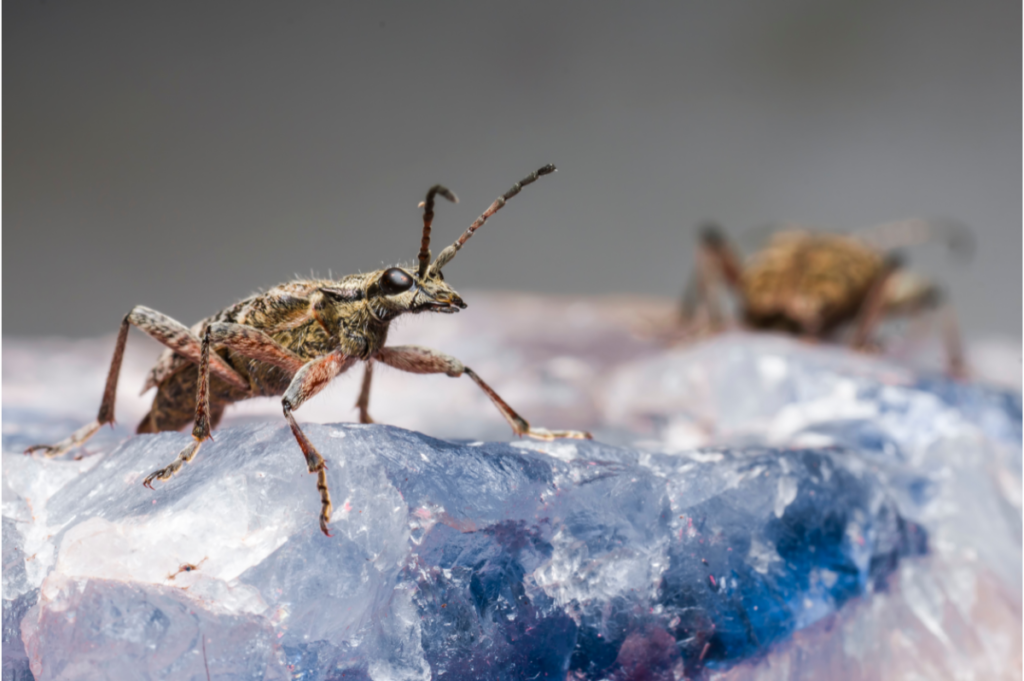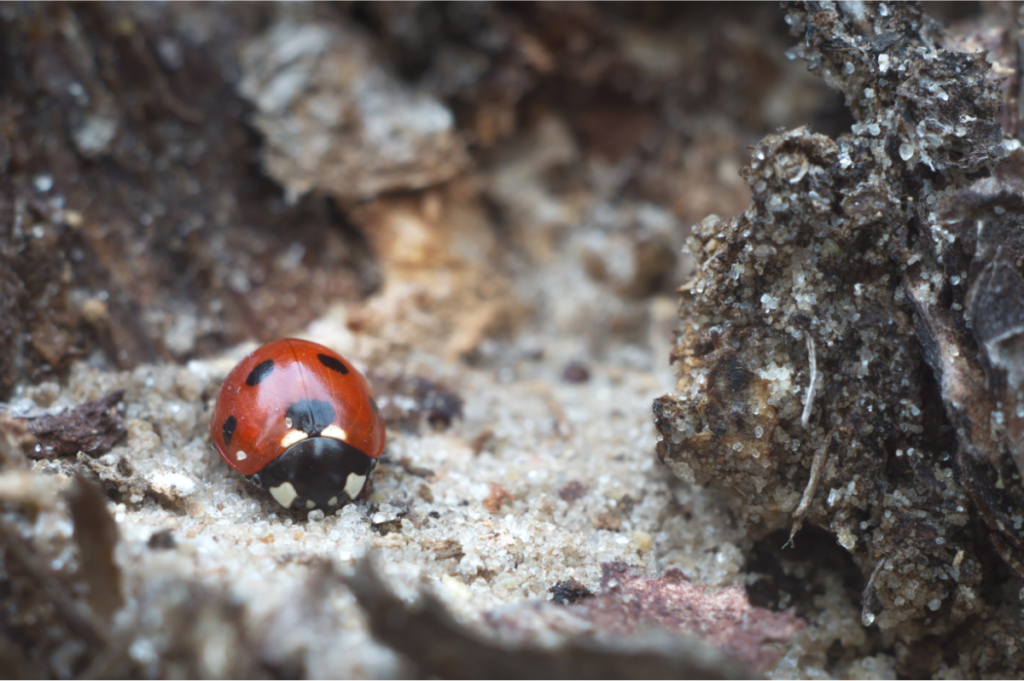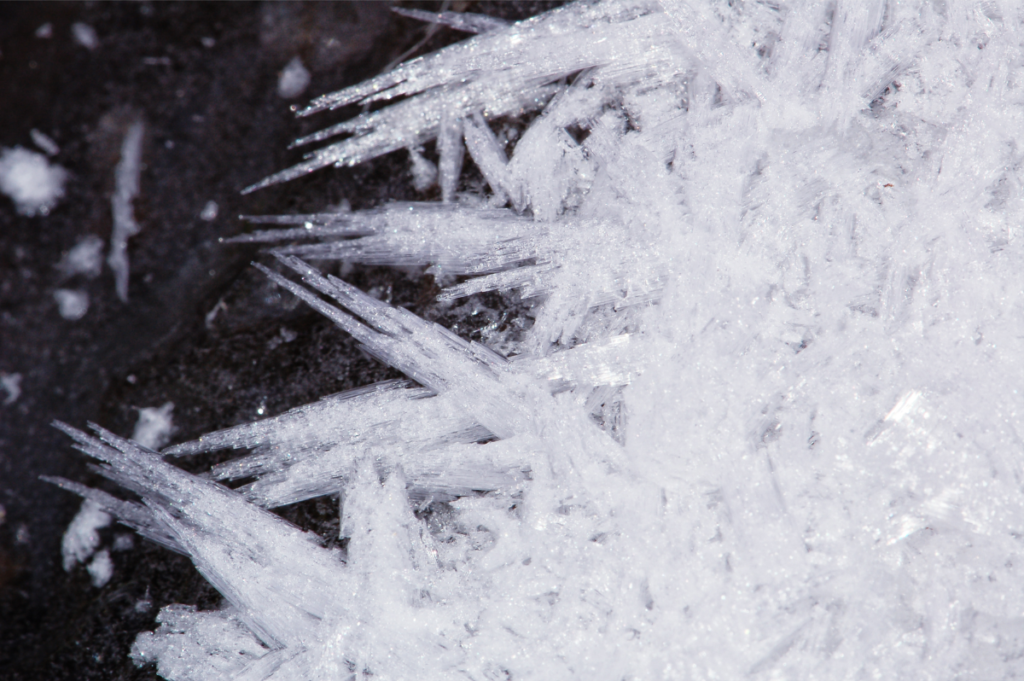Welcome back to the Lab!
Winter is slowly descending around us, and while I appreciate that the approach has been slow this year, I still find myself somewhat incapacitated by the cold once temperatures reach nearly-freezing. I always bounce back, especially when the snow finally shows up, but in the meantime, I cope with blankets, big sweaters, and snuggles with my dog. Our arthropod friends, on the other hand, aren’t so lucky.
Insects and other arthropods are ectotherms, i.e. cold-blooded, meaning they cannot generate their own body heat; this poses some obvious challenges in temperate climates, where seasonality causes major temperature fluctuations.
Many insects will seek shelter at the onset of winter, burrowing into the soil, hiding out in the cracks of trees, or quietly squatting in man-made structures. They will hunker down in any place that will protect them from the brunt of winter, and frequent freeze/thaw cycles.

But insects are still somewhat exposed, so they need to have a backup plan. Temperatures in northern climates, as we well know, are subject to drop well below freezing, and in that case, many insects employ a strategy known as “freeze avoidance.” Essentially, the insect prevents ice formation in bodily fluids through a process known as “supercooling.”

In order for ice formation to occur, ice crystals need a nucleation site. Essentially, ice crystals won’t form if they don’t have something to “grab” onto. Water and other liquids can be cooled far beyond their freezing point without a nucleation source; water, for example, can reach -42°C (-43.6°F) and remain liquid if no nucleation source is introduced. This process is adequately named “supercooling,” and insects use it to depress the temperature at which their body fluids will freeze.
As the weather turns colder, insects begin cold-hardening, the process by which they prepare for colder temperatures. In freeze-avoidant insects, this process involves removing all potential ice nucleation sources from their body, including food particles and bacteria. Some simply stop eating, others will force themselves to molt, shedding the entire lining of their midgut in the process.
Some insects completely alter their metabolism in order to supercool their body fluids through the use of cryoprotectants. “Cryoprotectant” is a catch-all term referring to the various substances produced by ectothermic animals to protect their tissues from freezing. The most common cryoprotectant produced by insects is glycerol, which essentially renders their body fluids too viscous to form ice crystals at freezing temperatures.

Finally, one of the most fascinating freeze-avoidant strategies is the production of antifreeze proteins (AFP’s – or, if you really want to impress your friends, thermal hysteresis factors (THFs)). Antifreeze proteins are produced by all freeze-avoidant insects, and are quite literally a family of proteins that prevent freezing by binding to the surface of ice crystals and preventing them from growing. The production of antifreeze proteins is triggered by day length; as daylight decreases and insects experience a shorter photoperiod, the production of antifreeze proteins ramps up, and reaches its peak during the darkest months of winter.
While their strategies are beyond impressive, I’ll stick with giant sweaters and dog cuddles.
Until next time, thanks for visiting the lab!
Bug Wrangler Brenna
brenna@missoulabutterflyhouse.org
Want to revisit a previous Notes from the Lab issue? Check out our archive! Do you want to request a subject for an upcoming issue? Email me at the address above and put “Notes from the Lab” in the subject line.